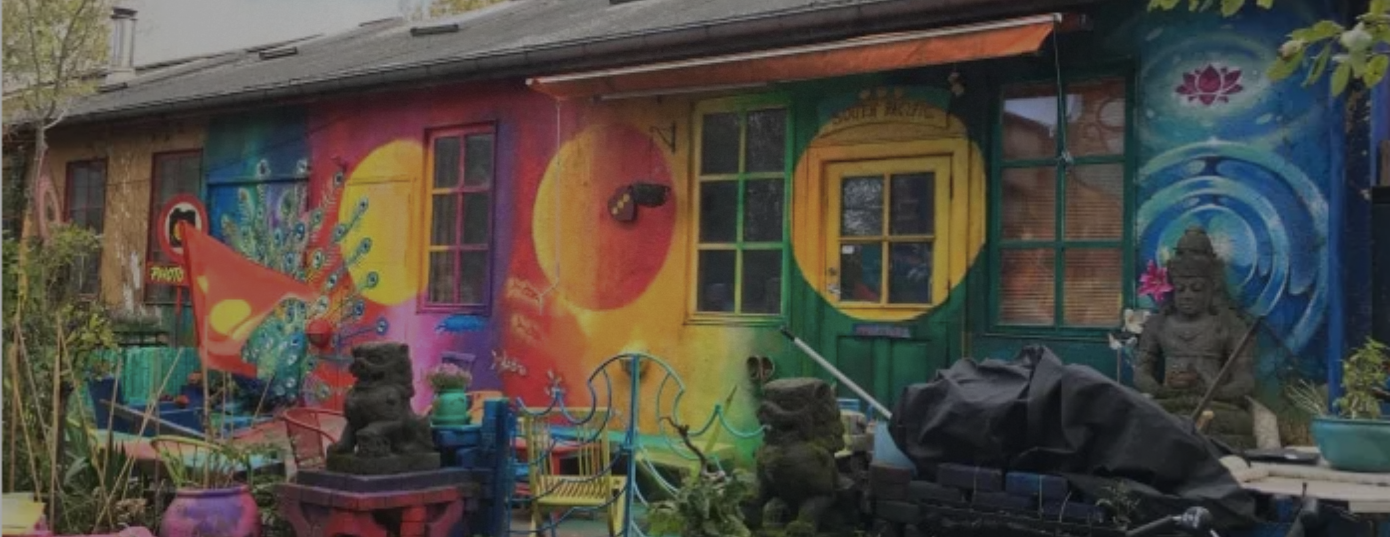One does not need to be a history nerd to appreciate the intriguing story behind the most famous cannabis-friendly district located in the middle of Copenhagen, Denmark: Freetown Christiania.
In honor of 4/20, I want to tell you about a very peculiar town where the cannabis trade has been tolerated for more than 50 years.
The History of Freetown Christiania
This tale goes way back to the 17th century when military barracks were established by King Christian IV around 1617 in hopes of reclaiming the low beaches and islets between Copenhagen and Amager. King Christian IV was successful, and the barracks remained from war to war until they were finally abandoned in 1967.
After the military moved out, homeless people started to live in the empty buildings, and inhabitants of nearby neighborhoods broke down the fence to take over parts of unused areas to give them another purpose. People started living there and reclaiming the territory as a playground for their children. Some people say the takeover was not necessarily organized in the beginning. Still, others claim this happened as a protest against the Danish government at a time when there was a lack of affordable housing in Copenhagen.
Later in 1971, Christiania was declared open by Jacob Ludvigsen, a journalist who published a magazine called Hovedbladet (meaning “The Main Paper”) wrote an article about “The Forbidden City of the Military.” Ludvigsen announced the proclamation of the free town, and under the headline, he wrote: "Civilians conquered the 'forbidden city' of the military."
The mission statement of Freetown Christiania offers the following:
“The objective of Christiania is to create a self-governing society whereby each and every individual holds themselves responsible for the wellbeing of the entire community. Our society is to be economically self-sufficient and, as such, our aspiration is to be steadfast in our conviction that psychological and physical destitution can be averted.”
Christiania’s population is about 1,000 residents; it covers 7.7 hectares (or 19 acres) and is located on the island of Amager. It’s pretty wild how these people turned a previous military site into its polar opposite: a hippie, collective and anarchist community.
Flash forward to the 21st century; in 2016, there was a shooting that injured three people. The incident shocked the whole commune, so to this day, Christiania is not the same as it used to be back in the 1970s. However, weed is still tolerated and available in the Green Light District; plus, it makes a very interesting place to visit while staying in Denmark!
The Green Light District and its three rules
Freetown Christiania is independent of the Danish government, but the town still needs to follow Danish law. Residents of Christiania, also called Christianit, have developed their own set of rules. When you walk into Pusher Street, you’ll see the well-known sign with its main three rules:
1. Have fun
2. Don't run
3. No photos
Pusher Street, which was formerly known as “The Green Light District”, is Christiania’s most famous street, thanks to the permanent stalls that sold all types of cannabis in the past. However, the booths have been forced to close because of the rising conflicts around the area. Since Christiania doesn’t tolerate violence, Christianit has been asking Copenhagen's people to buy their weed somewhere else.
Despite these attempts and the Danish police's efforts to stop the drug trade, it’s no secret that the cannabis market has thrived in Christiania. Nonetheless, cannabis sales had dropped about 75% after a shocking shooting that took place in 2016 when a person who sold cannabis pulled a gun out and shot two police officers and a civilian. As you’d expect, things got ugly between the police and the perpetrator, who died later from his injuries at the hospital.
It is safe to say that cannabis commerce is controversial in Freetown Christiania, especially following the last few years. Still, since the community’s rules require a consensus, the cannabis sale cannot be entirely removed unless everybody agrees. A consensus has not been made yet.
Cafés, restaurants, skate parks and live music
All in all, Freetown Christiania is a place definitely worth a visit. There are delicious restaurants to suit all kinds of cravings, from the typical Danish cake called “kage” to hamburgers and vegetarian dishes to quirky cafés where smoking is allowed.
If you enjoy live music, I have great news for you: from Thursday to Sunday, the whole district is filled with music of all sorts, from concerts to DJs and even jam sessions open to the public. I recommend checking out the Woodstock bar, the oldest bar in Christiania, located at the end of Pusher Street.
Last but not least, you have to visit the ALIS Wonderland skateboard park. This famous park was constructed 20 years ago by two friends that were born and raised in Christiania; up until today, there are many competitions that take place here!
Now you know about one of the largest tourist attractions in Copenhagen; On this holiday, impress your stoner friends by telling them about this autonomous anarchist hippie town and how it came to be.
Auteur : Mary Jane
Freetown Christiania. Wikipedia. Retrieved from https://en.wikipedia.org/wiki/Freetown_Christiania
Seferou, A (2018). Christiania: 11 Things to Know About Copenhagen’s Hippie “Free Town”. The Culture Trip. Retrieved from https://theculturetrip.com/europe/denmark/copenhagen/articles/christiania-13-things-to-know-about-copenhagens-hippie-free-town/
Le Pague, S (2020). Alternative Art: Freetown Christiana & 59 Rivoli. On the road Diary. Photograph retrieved from: https://www.ontheroadiary.com/alternative-art-59-rivoli-freetown-christiania-what-you-need-to-know/


0 commentaires